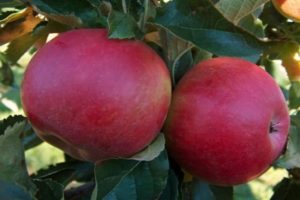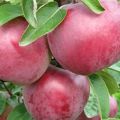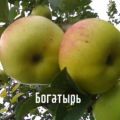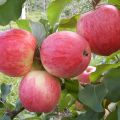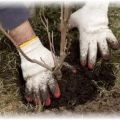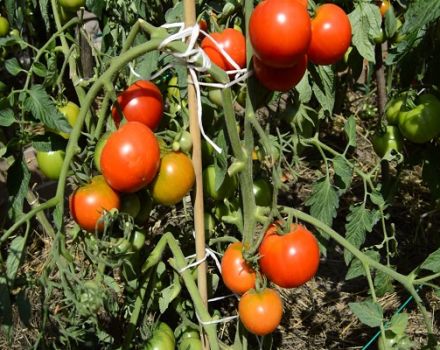Description of the variety of apple trees Pink filling (Robin), advantages and disadvantages, cultivation
Folk selection fruit trees have become very popular among gardeners due to their good adaptation to the growing region. Among the variety of varieties, summer residents especially highlight the Pink filling apple tree. It is distinguished by its high palatability and good yield. Before buying seedlings, it is recommended to study varietal characteristics, planting rules and subsequent care.
Description and characteristics of the Malinovka apple tree
In the people, Pink filling is often called Robin because of its beautiful pink color. Also, the tree is confused with the Suislepskoe subspecies, which is less productive and poor winter hardiness. The largest distribution of Pink filling is in the Nizhny Novgorod region. It belongs to summer ripening varieties. The fruits reach technical maturity in June and July. The harvest is stored only until the second half of October. After that, the apples begin to rot and deteriorate. You cannot harvest fruits for the winter.
Fruits are suitable:
- for fresh consumption;
- canning;
- for the production of juice and wine.
Also, delicious cider, jelly, compote are obtained from the fruit. The variety is self-fertile. But in order for the ovaries to form more abundantly, it is recommended to plant pollinators nearby:
- Melba;
- Pearwood.

The variety bears fruit annually. Depending on climatic conditions, the yield is different every year.With a lack of moisture, the yield does not decrease. The variety tolerates heat up to +40 ° С.
Dimensions of the tree
A small, compact tree reaches a height of no more than 3 meters. The crown is thick and resembles a pyramid. This structure is the main external feature of the variety. The barrel is powerful.
Yield
An adult tree pleases gardeners with an abundant yield of up to 50 kilograms of apples in a productive year.
Some specimens are capable of producing up to 80 kilograms of fruit.
Tasting assessment
The fruits are rounded with a slight flattening. They grow large in size, weighing about 130 grams. Apples are juicy and firm. The taste is pleasant, sweet and sour. Tasting score - 2.9 points.
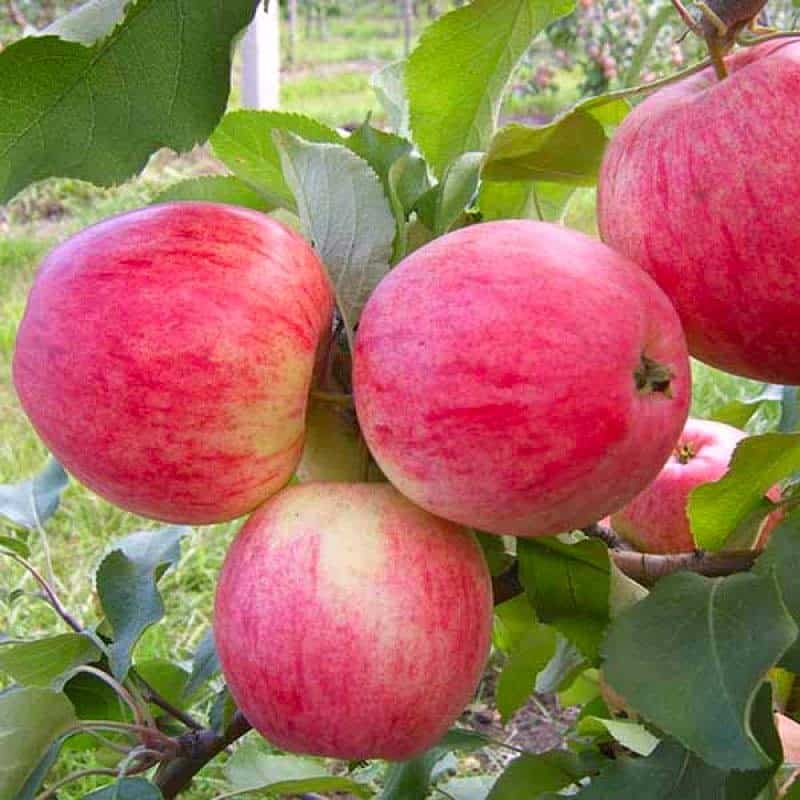
Wintering features
Refers to a highly winter-hardy variety. It perfectly tolerates severe winters down to -35 ° С.
Disease resistance
It is immune to many diseases. In the summer, with prolonged rains, fruit rot develops. The tree is often attacked by the moth, which damages the fruit.
Advantages and disadvantages of the variety
The apple tree is endowed with many advantages:
- Endurance. It tolerates high and low temperatures perfectly.
- Undemanding to soil and the amount of nutrients.
- Pleases with early fruiting. You can enjoy the taste of the first fruits two years after planting.
- Due to the high content of pectin in fruits, apples are great for making mousses, jellies and jams.
- Fruiting. Mature trees, starting from 15 years of age, give a stable, bountiful harvest.
- The variety is immune to the most common apple disease. The tree is rarely affected by scab.
- The fruit is firmly attached to the branches. The variety does not have a tendency to massive apple falls.
- The fruits are resistant to sunburn.

Negative qualities include:
- Lack of immunity to the moth. To prevent the caterpillar from spoiling the entire crop, preventive measures must be taken.
- Rainy, hot weather provokes the appearance of fruit rot.
The tree lives for about 70 years, and bears fruit for no more than 40 years.
How to choose the right seedlings
When choosing a plant, they pay attention to some points:
- there should be 5 branches on the crown;
- grafting at a distance of 8 centimeters from the roots;
- the bark should look healthy;
- the height of the seedling is one and a half meters;
- the plant must have many roots.
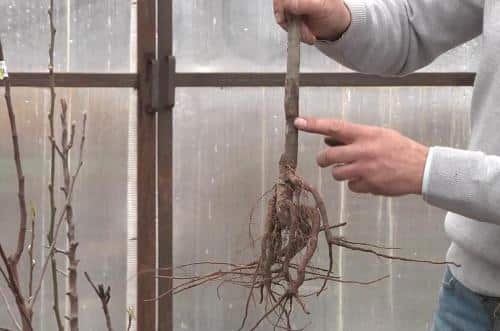
A preliminary examination of seedlings before buying is a guarantee of good fruiting in the future.
Landing rules
In order for the variety to take root and develop well, it is necessary to pay special attention to the planting rules. The ideal time for planting a seedling is March, April. The plant is also planted in September, October.In the fall, the Pink filling is planted before the soil freezes.
Choosing a place on the site
The apple tree does well in a well-lit area with breathable soil. Prefers soil:
- loamy;
- sandy loam;
- moisture-absorbing.
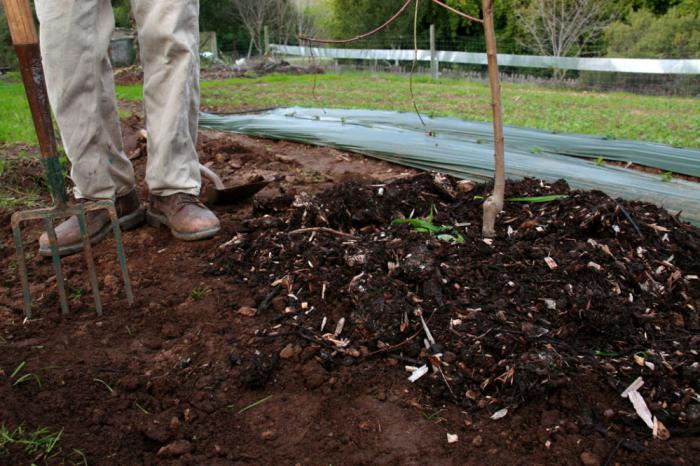
The place should be sunny.
Pit preparation
You need a deep hole. The diagonal is 90 centimeters. The depth is 80 centimeters. Peat and humus are added to the soil.
Planting scheme for seedlings
Saplings are planted at a distance of 3 meters from other trees and fruit crops.
Features of plant care
The variety is resistant and unpretentious. Therefore, leaving does not require complex manipulations.
Soil care
The surrounding area around the apple tree must be carefully weeded and loosened regularly. The plant does not get along well with weeds. To reduce the amount of weeding, you can mulch the circle around the trunk with any available materials: grass, sawdust, cloth, paper, bark, etc.
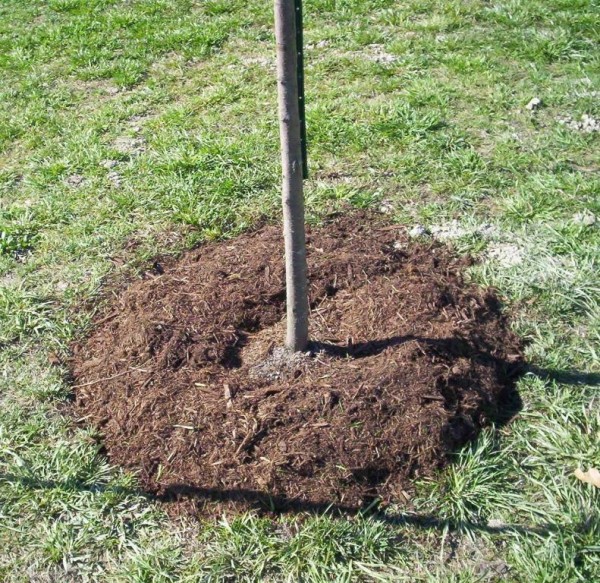
Top dressing
Every spring the tree is fed with mineral and organic fertilizers.
Pruning
Annual thinning pruning is required. Each year, the branches grow intensively in width, and the crown thickens. Cut off excess parts after the snow melts, until the buds open. After the procedure, it is treated with copper sulfate.
Protection from cold weather and rodents
In the fall, it is necessary to whitewash the trunk, and the snow that has fallen should be strongly tamped around the tree. This will help the plant to tolerate severe frosts more easily.
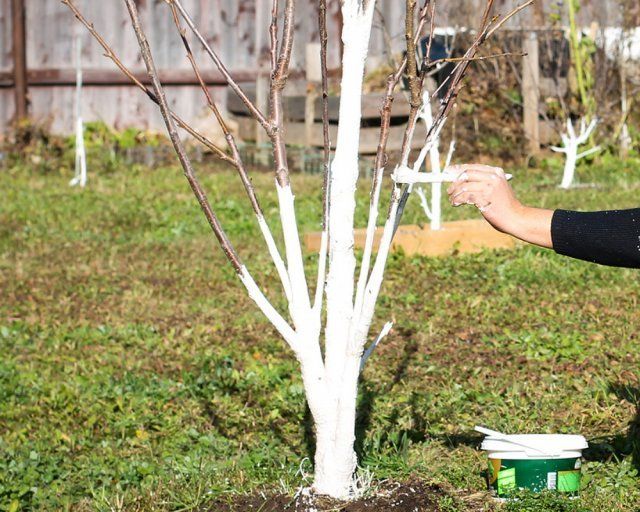
From rodents, the trunk is tied with spruce or pine legs. To do this, the branches are collected and tied to the tree from top to bottom.
Preventive treatment
Fighting fruit rot is impossible. Only prevention helps. To do this, the ovaries are sprayed with a preparation with fungicides. Then processed one month before the technical maturity of the fruit and 2 weeks after the full harvest.The solution should fall abundantly on each branch. Organic insecticides with a high phosphorus content are used for pest control. During processing, the manufacturer's recommendations are strictly observed.
Preventive measures against the moth:
- in spring and autumn, the old bark is cleaned, under which the caterpillars winter;
- regularly in the summer season, they shake the branches and collect the carrion;
- moths are afraid of bees, therefore, it is recommended to plant flowering bushes near the tree, which attract the smell of beneficial insects;
- The smell of tomato seedlings helps to drive away caterpillars;
- good protection is a trapping belt, which is easy to make with your own hands from adhesive tape.
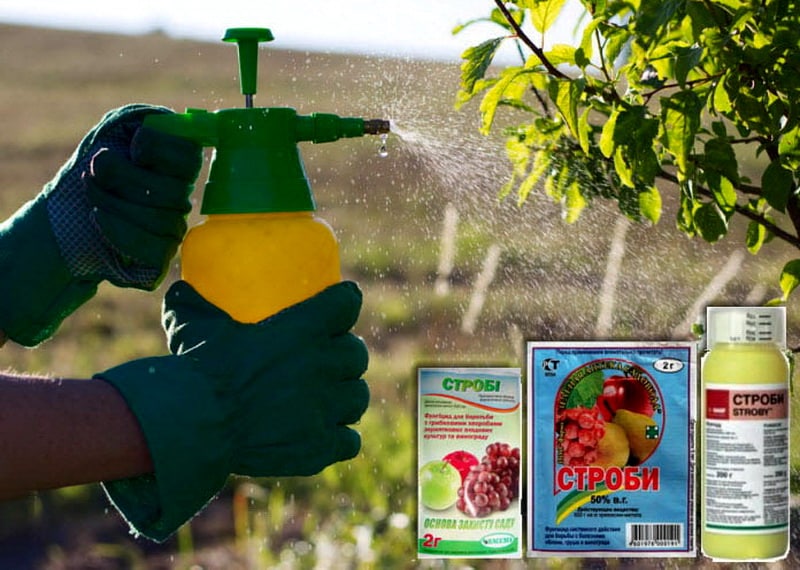
A combination of mechanical treatments with chemical treatments will help protect plantings from pests and preserve the harvest.
Variety options
There are various varieties of varieties that have their own characteristics.
Decorative
Plant up to 8 meters high with a wide-pyramidal crown. Blooms regularly in May. The fruits are medium-sized, bright. The tree is highly winter-hardy.
Columnar
The plant grows with one trunk. Fruits are formed on shortened fruit formations. The apple tree has practically no branches - this makes it easier to collect fruits and significantly reduces labor costs during tree care.
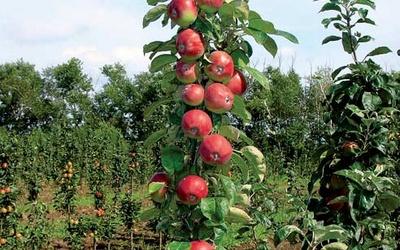
Red-leaved
A distinctive feature is the foliage of the tree. It is colored red. Refers to hybrid varieties. It is resistant to diseases and differs in unpretentiousness to growing conditions.
Riga
Fruits are sweet, long-term storage. Do not fall off during maturation. The fruits are medium in size, dark red. Harvesting - September. The variety resists disease well and tolerates frost well.
Growing in the regions of Russia
Before buying seedlings, you need to know about the peculiarities of growing the variety in different regions.
In the suburbs and the Leningrad region
The climate of these areas is ideal for growing Pink Plum. There are no peculiarities of care in these regions. Follow the basic rules for growing fruit trees.
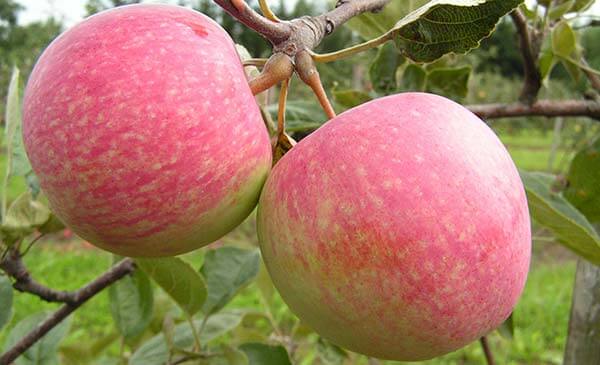
In the middle lane
In the west of the country, in the southern region and the middle lane, the variety is zoned for cultivation on an industrial scale, for decorative purposes and for subsidiary plots. Therefore, if necessary, it will not be difficult to find a seedling suitable for a specific area, which does not require additional costs and maintenance.
In North-west
In these areas, despite the frost resistance, trees require shelter for the winter. For this purpose, special mats and other means of protection against cold weather are suitable.
